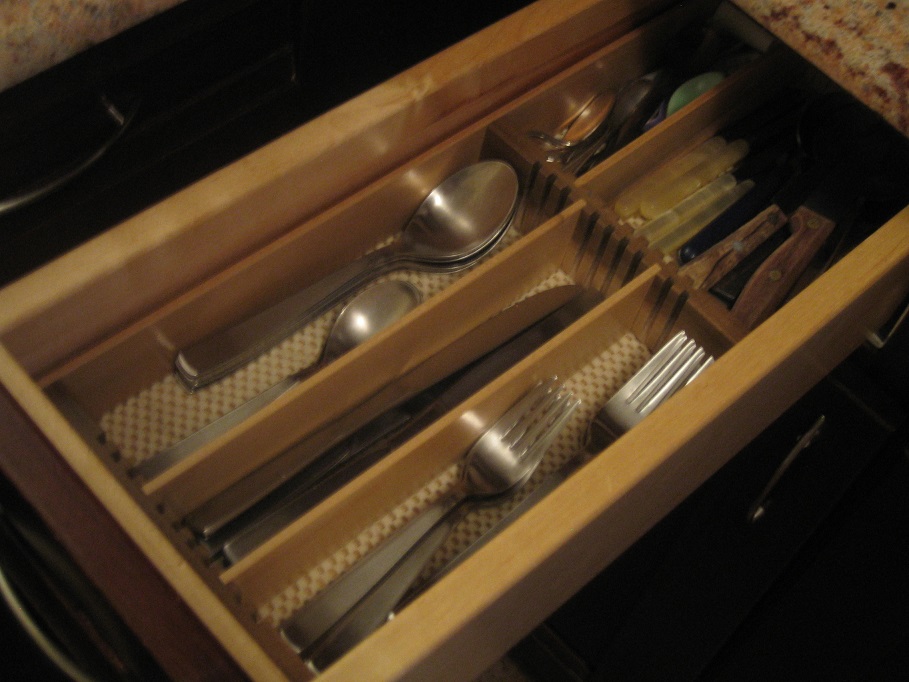
Another title for this post could have been “A match made in heaven — your narrow drawer and the Brandi template.” But that sounds too dramatic and rather ridiculous. So we’ll stick with the boring-but-practical-sounding title.
The narrow kitchen drawer tends to be used for flatware, and there may be no better candidate for a custom drawer insert. Why? Because every bit of space counts in a narrow drawer!

By far, our most popular template for narrow kitchen drawer is the Brandi template…and for good reason. When all the dividers in an insert are oriented front-to-back, we can use thinner material for the side walls of the insert, leaving more usable space across the width of the drawer than with other templates.

You might be wondering, “Why can’t you always use thinner material?” Well, the slots require that we use thicker material. If dividers are in the side-to-side orientation, we need thicker walls to make sure there’s room for slots and for enough material left over for a structurally sound product.

If having thinner material is important for your drawer situation, let us know, and we’ll do what we can do accommodate.
